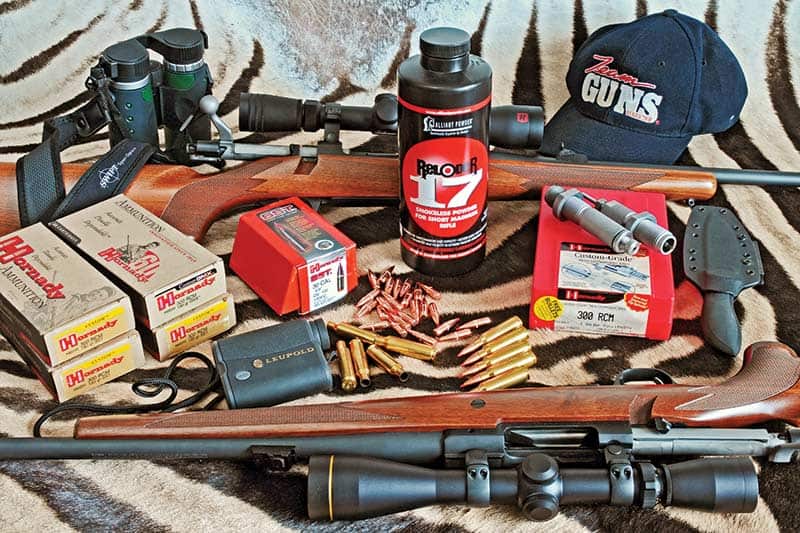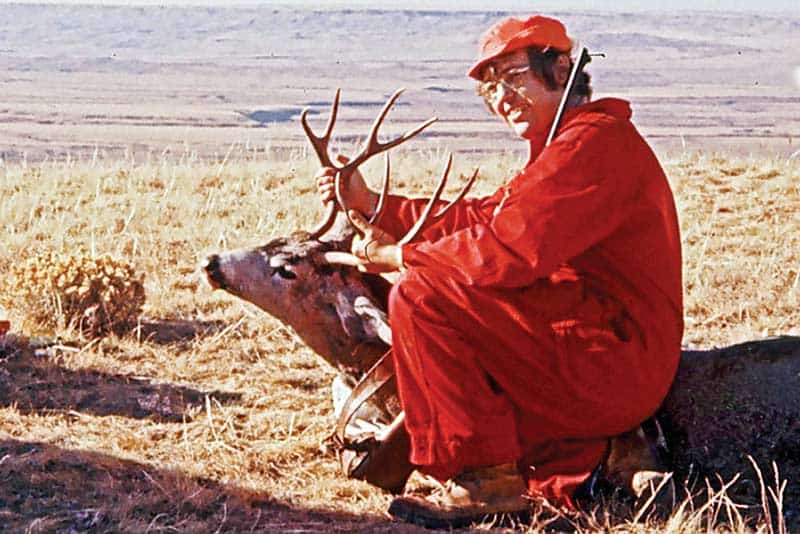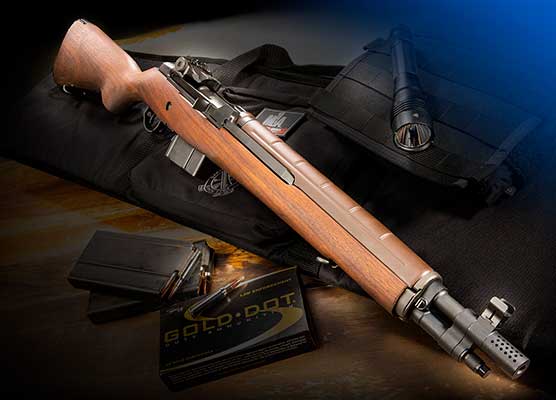Longevity!
Some Cartridges Have It, And Some Don’t
With so many new cartridges in recent years it’s interesting to speculate on their long-term success. Not necessarily which is best designed, or has the most impressive ballistics, but which ones are likely to gain widespread acceptance.
There are a lot of good cartridges available today. If the cartridge is chambered in currently made rifles, and ammunition readily available, it is at least a short-term success. But which are the superstars, the ones so popular for so long we just take them for granted?
Any list is going to be both subjective and arbitrary. My view is to make the list, a cartridge must have two qualities: (1) longevity, and (2) availability in a wide range of current production rifles.
Longevity is important. Many cartridges have enjoyed widespread popularity when first introduced, only to fade as the novelty wears off. I wasn’t yet into my teens when the .264 Win Mag appeared in 1959, to great acclaim. It seemed every rifle manufacturer quickly jumped on the bandwagon. For a time it was available from Browning, Remington, Sako, Savage and Winchester. Ten years later it was staggering around the ring like a punch-drunk boxer.
In terms of longevity, I arbitrarily included only cartridges in production for more than 50 years as I write this in 2017. The list would be a very long one, but the issue of availability really cuts it down to size. If a cartridge has been around for 50 years or more and is still in demand in current production rifles, it must have something going for it.
Advertising and magazine articles can get a cartridge off the runway and into the air, but from then on it has to fly on its own. Ultimately a cartridge’s success or failure isn’t decided by gun writers, or even by gun enthusiasts. Its fate is up to the collective judgment of hundreds of thousands of shooters and hunters, sharing their experiences around campfires and in deer shacks.
To check on availability I went to the websites of 14 major rifle manufacturers. Alphabetically the manufacturers include Browning, Cooper, CZ, Kimber, Mossberg, Remington, Ruger, Sako, Savage, Steyr, Thompson-Center, Tikka, Weatherby and Winchester. My list of the most successful cartridges includes those available from at least 10 of the 14.
The list, in order of caliber/size include: 1) .223 Rem, 2) .22-250 Rem, 3) .243 Win, 4) .270 Win, 5) 7mm Rem Mag, 6) .308 Win, 7) .30-06, 8) .300 Win Mag, 9, .338 Win Mag, 10) .375 H&H Mag.
About now I expect readers whose favorite isn’t on the list are screaming “What an idiot!” or maybe something worse. But remember the criteria. It’s not about “classic” cartridges. There are several cartridges I consider all-time classics such as .250-3000 and .300 Savage, .257 Roberts, 6.5×55, 7×57 and 9.3×62 Mauser. I own rifles for all of these, usually more than one, and use them regularly. But they are not widely available in currently produced rifles.
The Weatherby cartridges weren’t included for the same reason of limited rifle choices. Among fans of Weatherby rifles—and there are many—they do very well. My personal favorites, the .257 and .300 also make my subjective list of all-time classics. Similarly, according to some sources, the .30-30 Win is the biggest selling factory centerfire cartridge. It would be ridiculous to suggest it isn’t successful and popular, but it is currently available in only a limited array of rifles.

One of Dave’s favorite newer cartridges is the .300 RCM, chambered in
the superb Ruger Compact Magnum rifle. He bought the test rifle from Ruger,
plus a spare. If it were up to him, it would be headed for stardom, but it isn’t.
Thousands of hunters sitting on stumps around campfires, or with their boots
up on the porch rail at hunting shacks, decide the future of new cartridges—not gunwriters.
I suppose this is hardly dramatic news. Most rifle enthusiasts could have put together pretty much the same list without poring over manufacturer websites. All are very good, useful cartridges. They became standards by meeting the needs of not just a few, but hundreds of thousands over a long period of time. And there are those who like to sneer at the views of the common people. “If it’s popular it can’t be good” sums up their attitude.
Enthusiasts and experts can be influential, no doubt about it, but in the long run nothing can beat the collective experience and collective wisdom of those thousands—millions—of regular people.
Many times I’ve read the .270 Win is popular only because it was a favorite of Jack O’Connor. Jack was influential, more than any writer since, but he’s been gone for almost 40 years. And even in the O’Connor era, the .270 got as much bad press as good, from writers who hated the cartridge (or more likely, hated O’Connor).
No writer or even group of writers can keep a cartridge popular unless the general hunting public likes it. The .280 Rem is an excellent cartridge, one I’ve used considerably and still use. It seems every couple of decades someone makes it a mission to enlighten the masses about its virtues. For a while, riflemakers chamber the cartridge and the rifles sell fairly well until the press hype stops. Then demand collapses and the remaining rifles gather dust until they are sold at a discount. It’s like running frantically to keep a kite in the air. As soon as you stop running, the kite flutters back to earth.

The first mule deer Dave ever shot back in 1975 was with a post
1972 Winchester 70A in .270 Win. There are many cartridges equally
good for mule deer, but still none better. Red coveralls? Back then, clothes
had to serve double duty and Dave wore these when tinkering with cars as well as for hunting.
Is there any practical value to this list? Well, if you are a regular reader, odds are you get called on to advise hunters and new rifle enthusiasts. Steering them in the direction of these cartridges means they should have lots of choice in rifle selection and confidence of ammunition supply.
The minutiae we riflemen love to debate doesn’t interest the average hunter or shooter. Start talking of case design, ballistic coefficients, wind drift and retained downrange velocity and expect the MEGO (“my eyes glaze over”) look. Ballistics trivia isn’t a big deal to them. Knowing they can buy ammo at WalMart (or the local hardware store) is a big deal.
Over the past couple of years several nephews have bought hunting rifles. First off, I’m delighted to see at least some of the next generation interested in hunting. Among their cartridge choices are several .300 Win Mags, a 7mm Rem Mag and a .243 Win.
Of course if we all used these standards exclusively there would be no innovation and no more cartridges to join the list of standards. Of the cartridges less than 50 years old, which are likely to one day join the exclusive list of standards?
The .25-06 Rem was a popular wildcat long before Remington made it a factory round in 1969. Currently it is chambered in 10 of the 14 rifle makes listed. Nearly 50 years old and readily available, it seems certain to make the list.
The 7mm-08 Rem is one I’d bet on. It has been around as a factory round since 1980 and has steadily risen in popularity. Just about any rifle capable of being chambered for it is chambered for it, and among lovers of light, compact hunting rifles it holds a special place. Currently all but 1 of the 14 of the riflemakers listed chamber for the 7mm-08 Rem.
The .300 WSM has been around since 2001 and seems to have established itself. Currently 9 of the 14 makers listed chamber rifles for the .300 WSM. It has tough competition in the .300 Win Mag, but Americans do love the .300’s and there may be enough demand for both to thrive.
The 6.5 Creedmoor seems to be regarded as a new cartridge, though it has been around nearly a decade. I get the impression it is following the 7mm-08 path, starting rather slowly and steadily gaining wider acceptance. I see 7 of the 14 companies chamber the 6.5 CM, some in several models. Certainly it is successful as a target round and it seems to be becoming more and more popular as a hunting cartridge.
There are many fine cartridges, old and new, I use and enjoy regardless of whether they achieve superstar status. And I still look forward to trying every new one that comes along!






